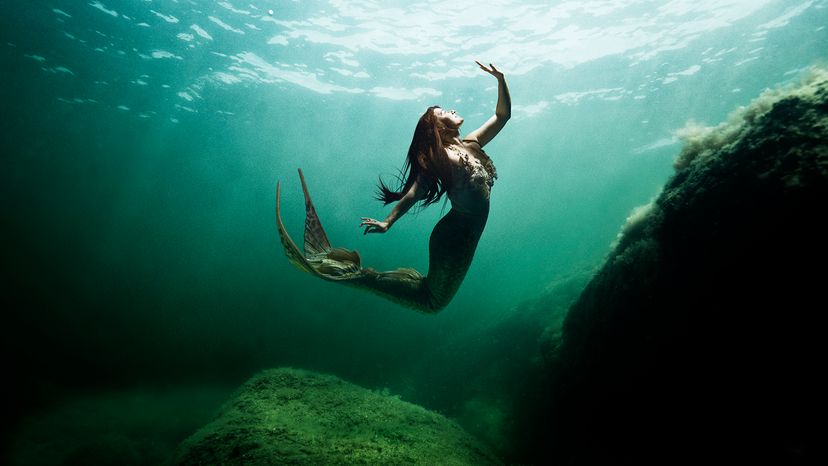Many cultures have different mermaid legends, leading to different depictions of the half-woman, half-fish beings. From creatures that can make you immortal to half-seal mythical creatures, here are a few ways that societies have viewed mermaids.
Ningyo
In Japanese culture, ningyo (a word that combines person and fish) is a fishlike creature with the mouth of a monkey, but the term has encompassed other beings. According to mermaid legend, eating ningyo flesh could make one immortal.
In the early 1900s, around the time when Japanese translations of "The Little Mermaid" first became available, the idea of mermaids began to change in Japan. According to Philip Hayward, a professor at University of Technology Sydney, in "Japan: The Mermaidisation of the Ningyo and Related Folkloric Figures":
"The story struck a chord with a number of Japanese writers, particularly female ones, who have provided a series of 'open-ended and nonlinear' engagements with Andersen's tale, including a number of works aimed at a young adolescent audience that use the mermaid and her accrued cultural meanings to explore female subjectivity and experience. Despite the frequent use of the term 'ningyo' in their titles and texts, most of these works drew more heavily on Andersen's model than on traditional Japanese ningyo folklore and didn't attempt significant infusions and/or modifications of the latter."
Selkies
Mermaid mythology is also present in Scotland and Ireland. As author Jason Marc Harris writes in "Perilous Shores: The Unfathomable Supernaturalism of Water in 19th-Century Scottish Folklore," "the range of Scottish tales and beliefs about the mermaid exemplifies the dynamic of ambivalence that people have towards the powers of the water as well as the checks and balances of folk metaphysics."
In Scottish culture, there are stories of destructive or magical mermaids that share similarities to selkies.
"Selkies are creatures living off the west coast of Ireland and Scotland that are both human and seal," writes Stuart C. Aitken, a professor at San Diego State University, in "The Edge of the World: Embattled Leagues of Children and Seals Teeter on the Rim." "Underneath its seal skin the selkie is human, and when it discards the skin it can walk on land as a man or a woman. If a man steals the skin of a female selkie, she is tied to him as a wife and will not return to the water for as long as he has her skin. it is said that this ancient legend is a precursor to the modern myth of mermaids."
Mami Wata
Mermaids are not just a Western concept. Several countries across Africa celebrate Mami Wata, a "beautiful, protective, seductive and potentially deadly" water spirit, according to art historian Henry J. Drewal. She is half-fish and half-human and can appear as a snake charmer.
"Mami Wata is widely believed to have 'overseas' origins, and depictions of her have been profoundly influenced by representations of ancient, Indigenous African water spirits, European mermaids and snake charmers, Hindu gods and goddesses, and Christian and Muslim saints," Drewal writes in "Mami Wata: Arts for Water Spirits in Africa and Its Diasporas."
"Although for some she bestows good fortune and status through monetary wealth, for others, she aids in concerns related to procreation — infertility, impotence or infant mortality. Some are drawn to her as an irresistible seductive presence who offers the pleasures and powers that accompany devotion to a spiritual force. Yet she also represents danger, for a liaison with Mami Wata often requires a substantial sacrifice, such as the life of a family member or celibacy in the realm of mortals."
